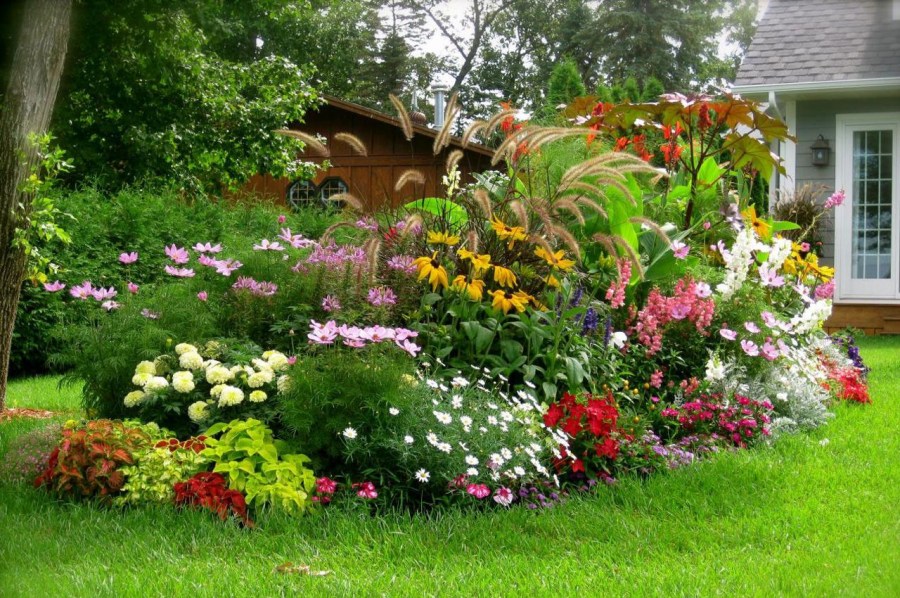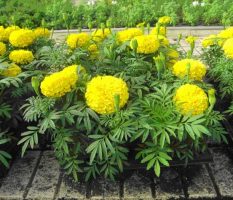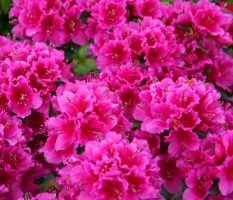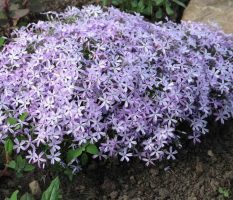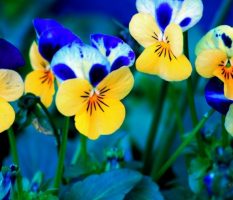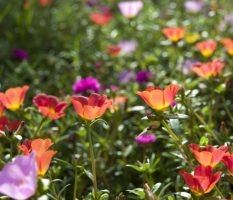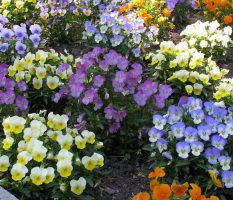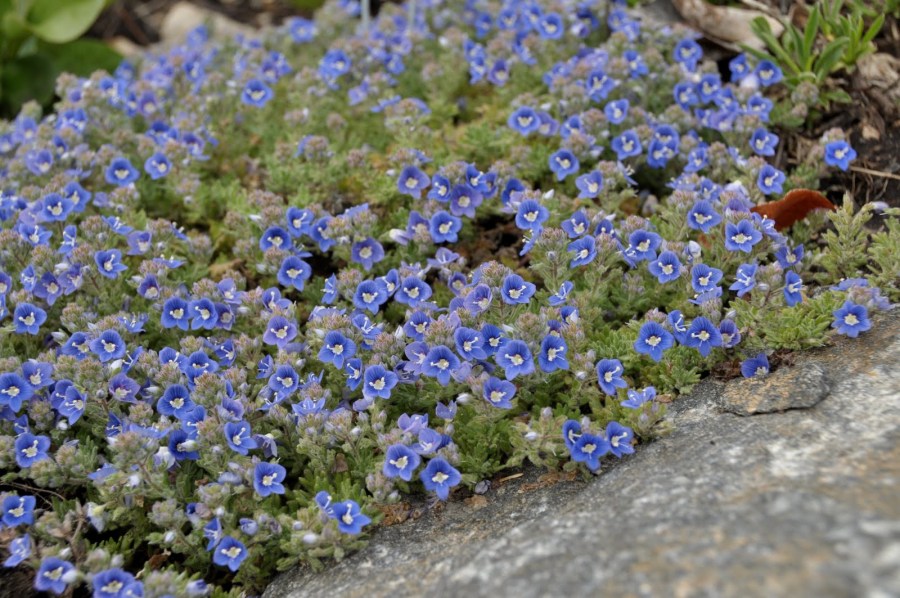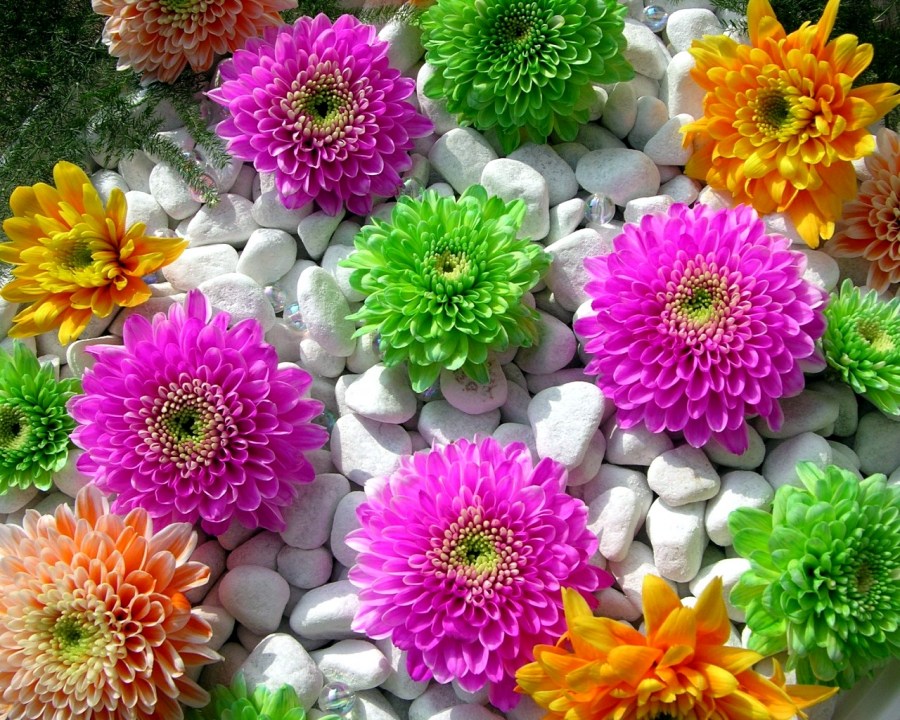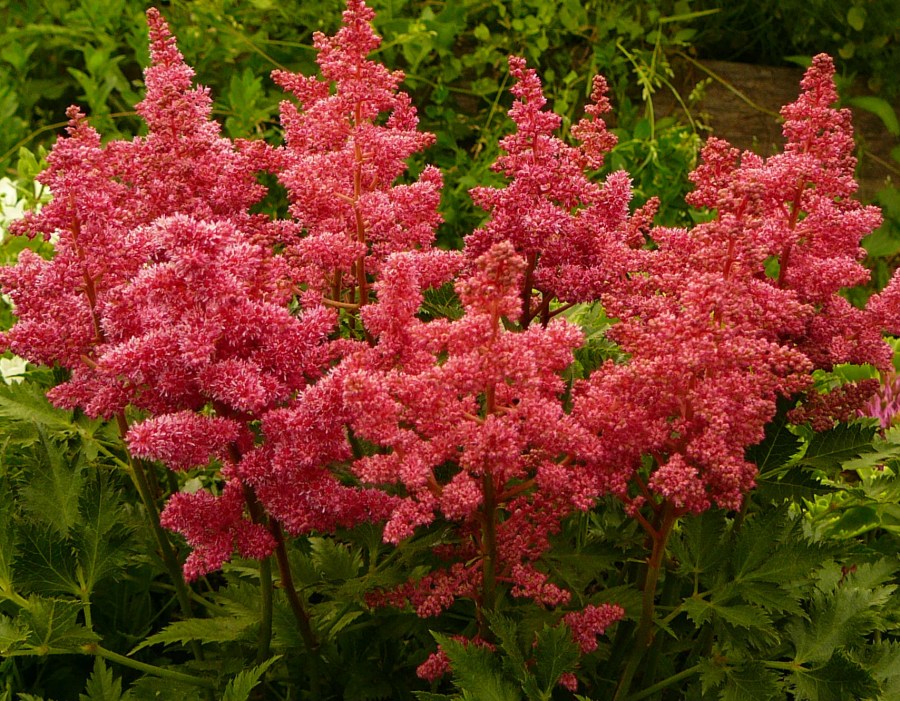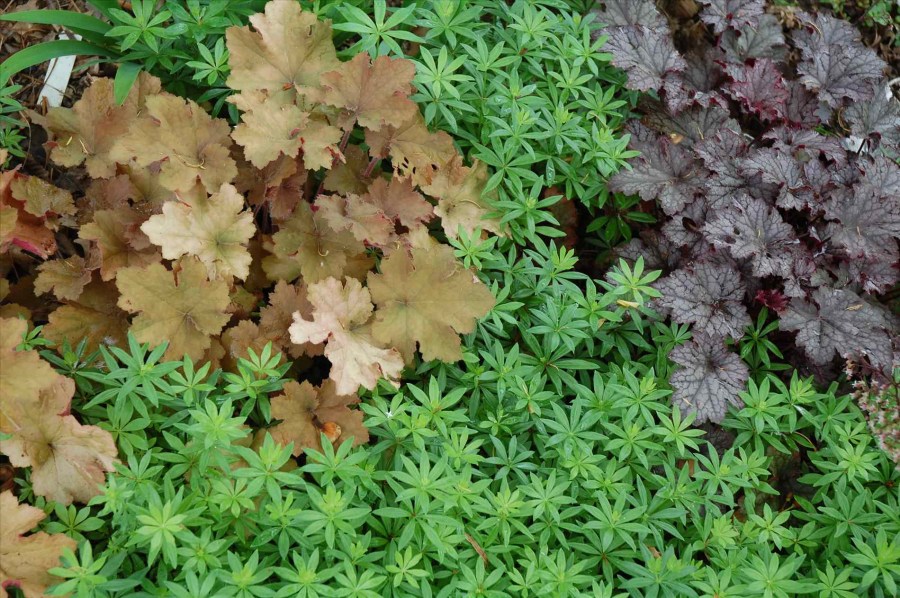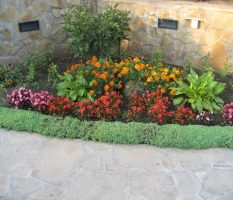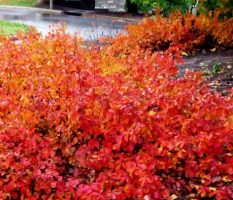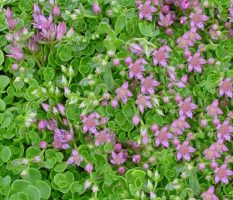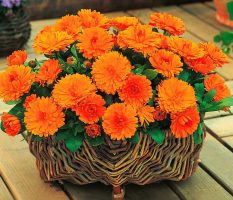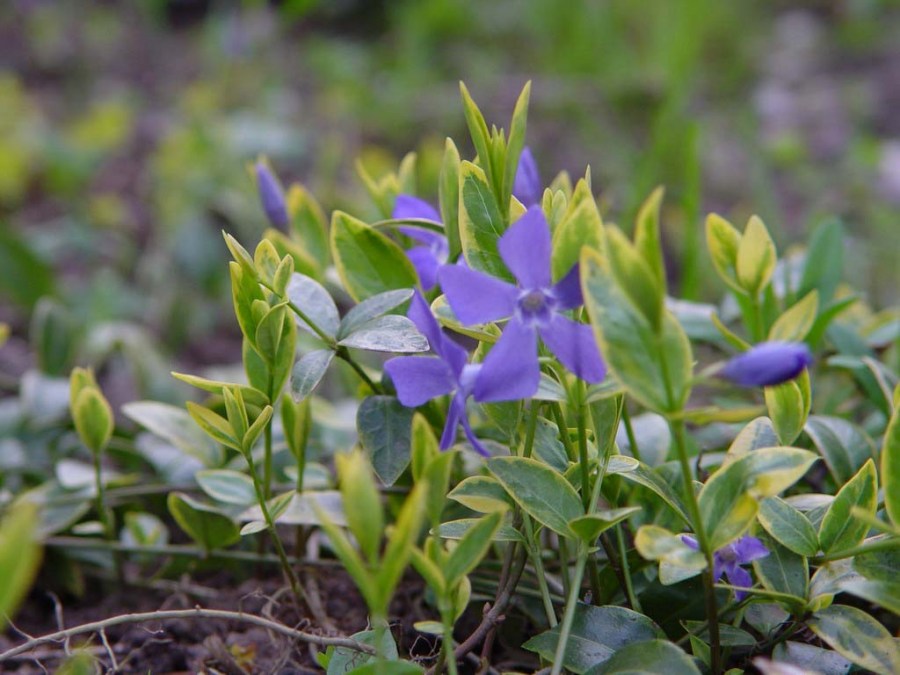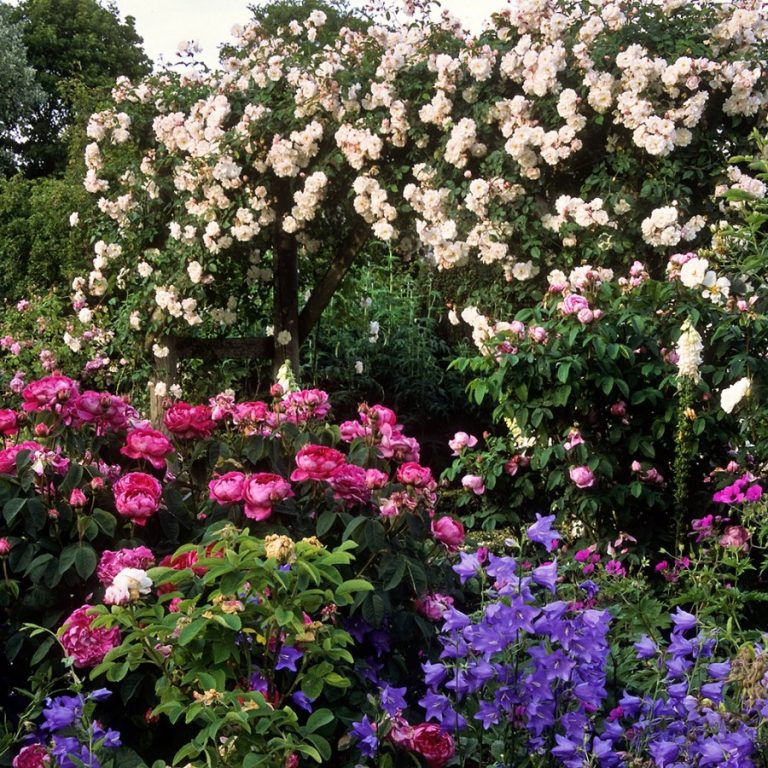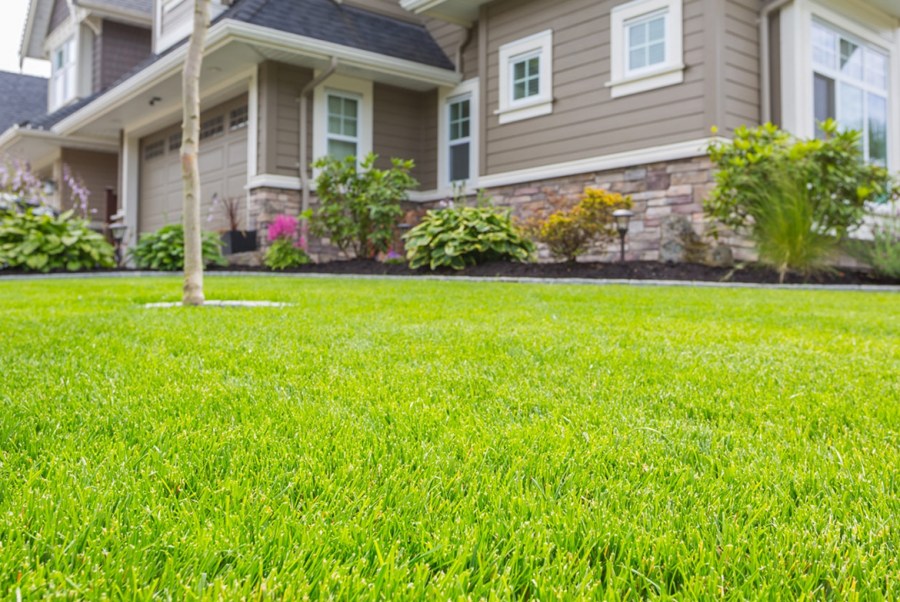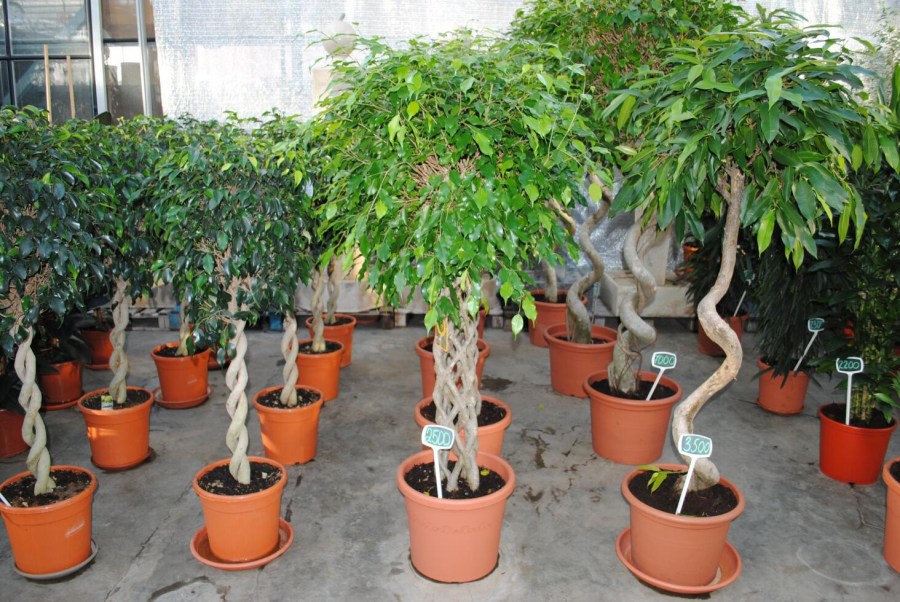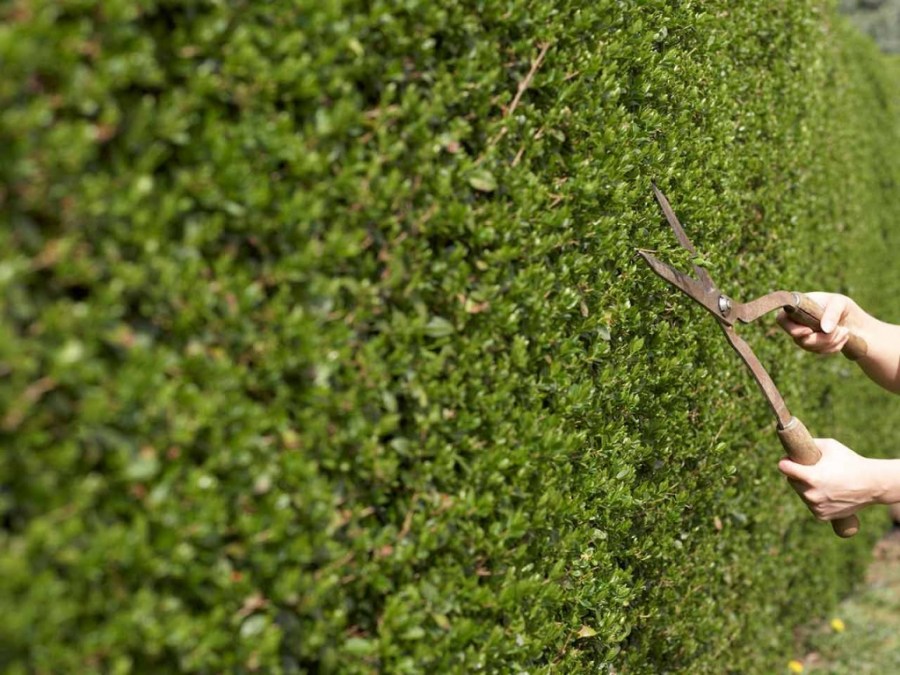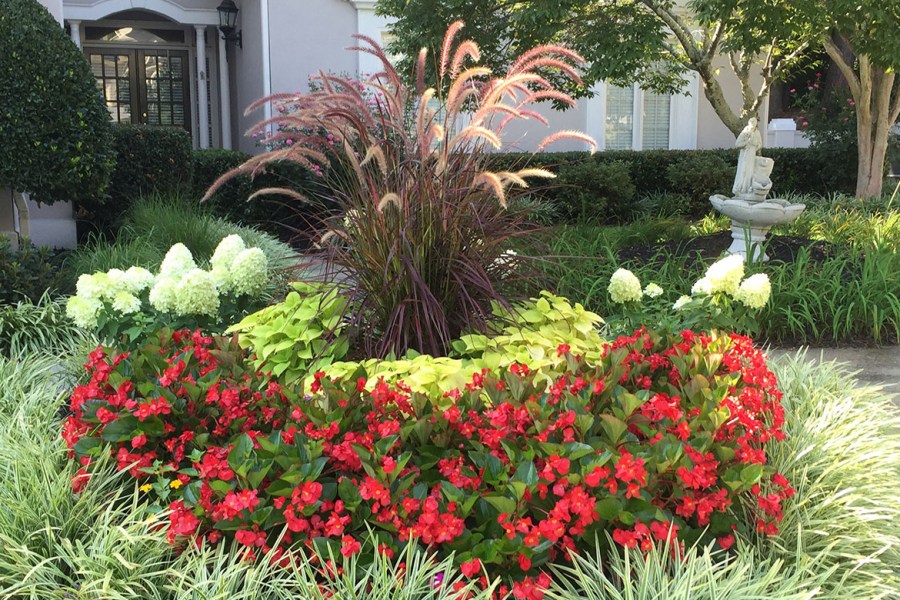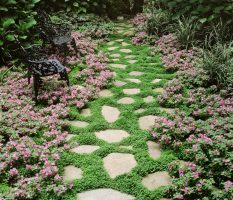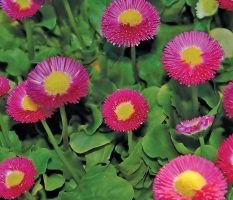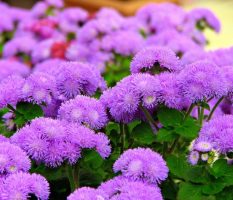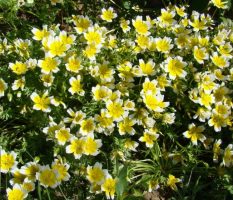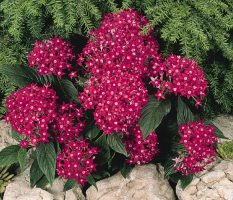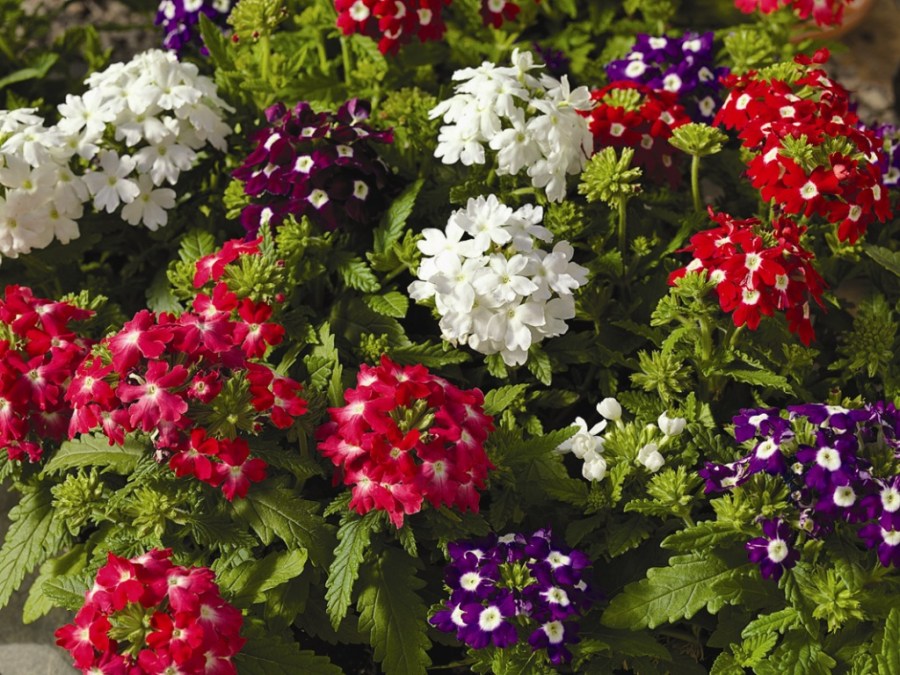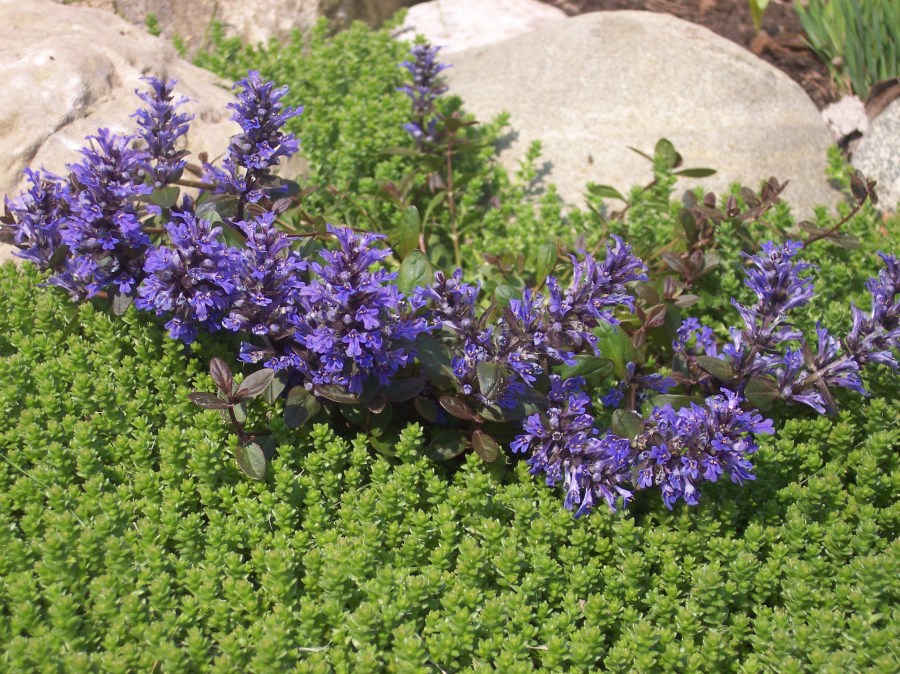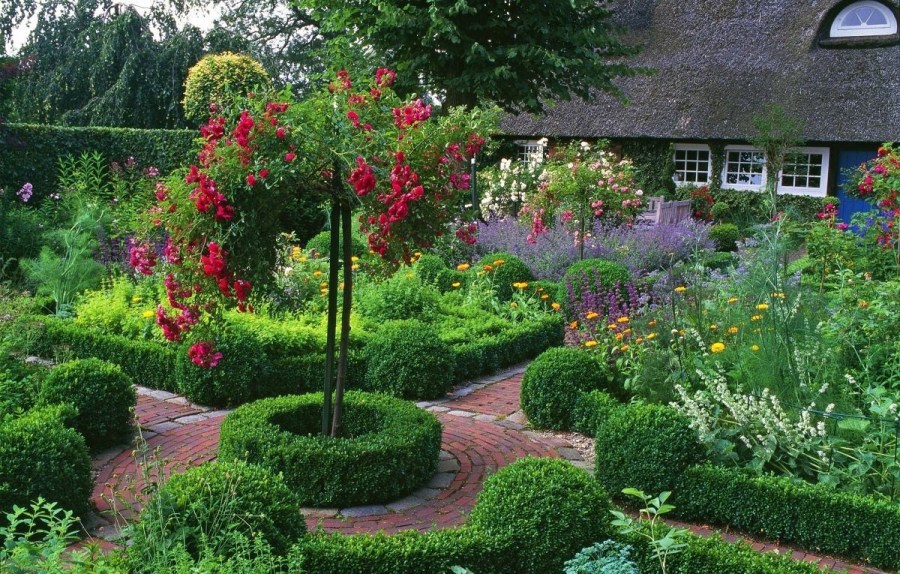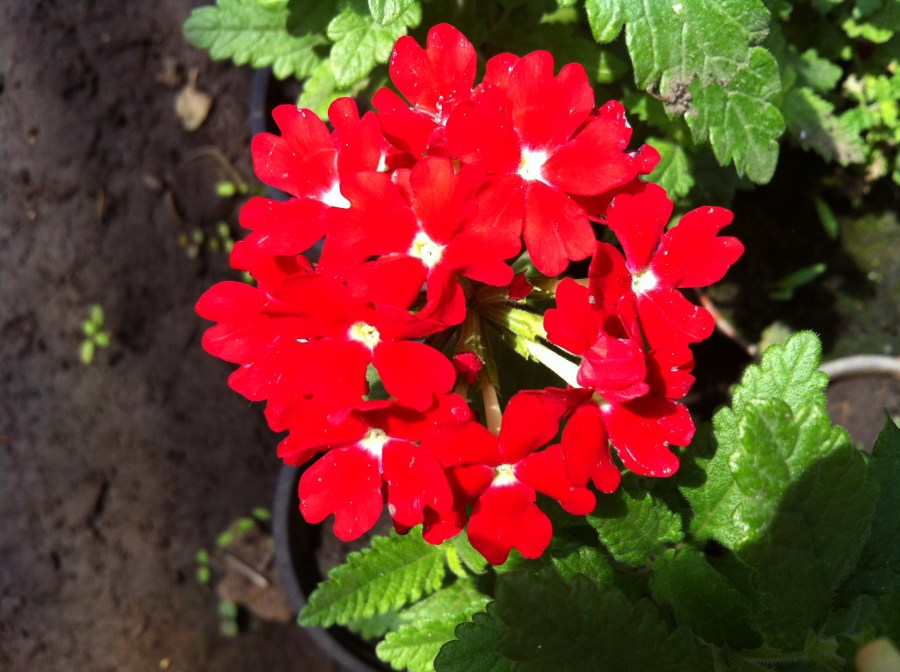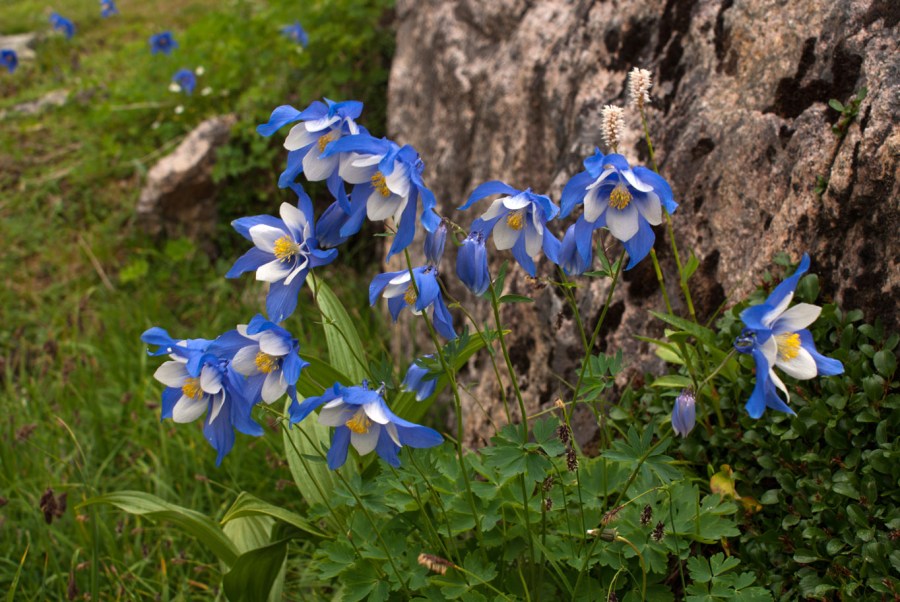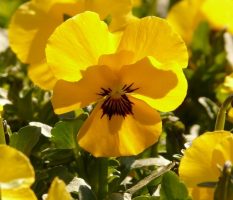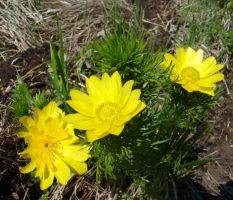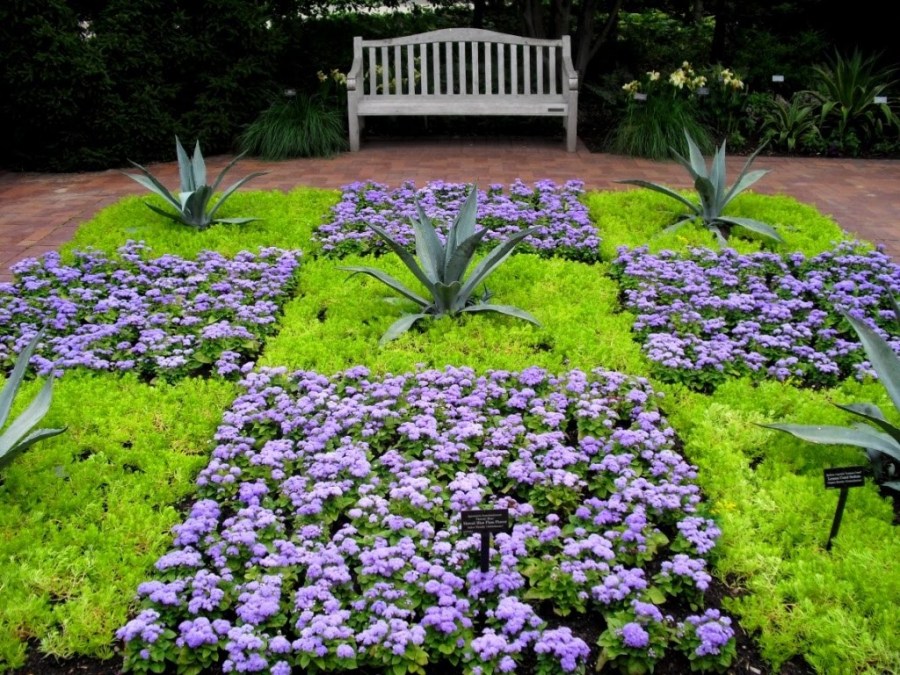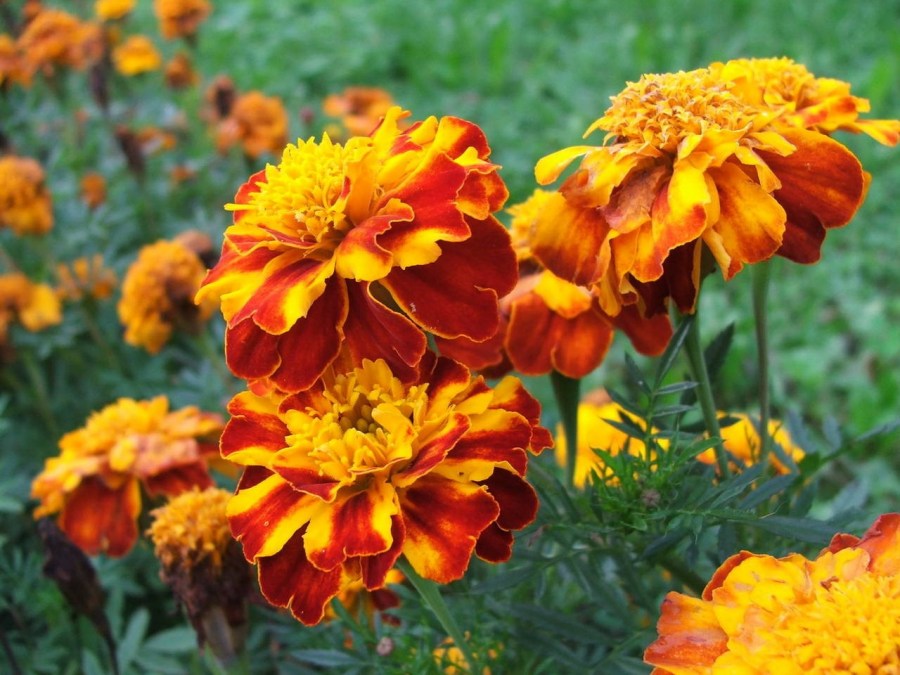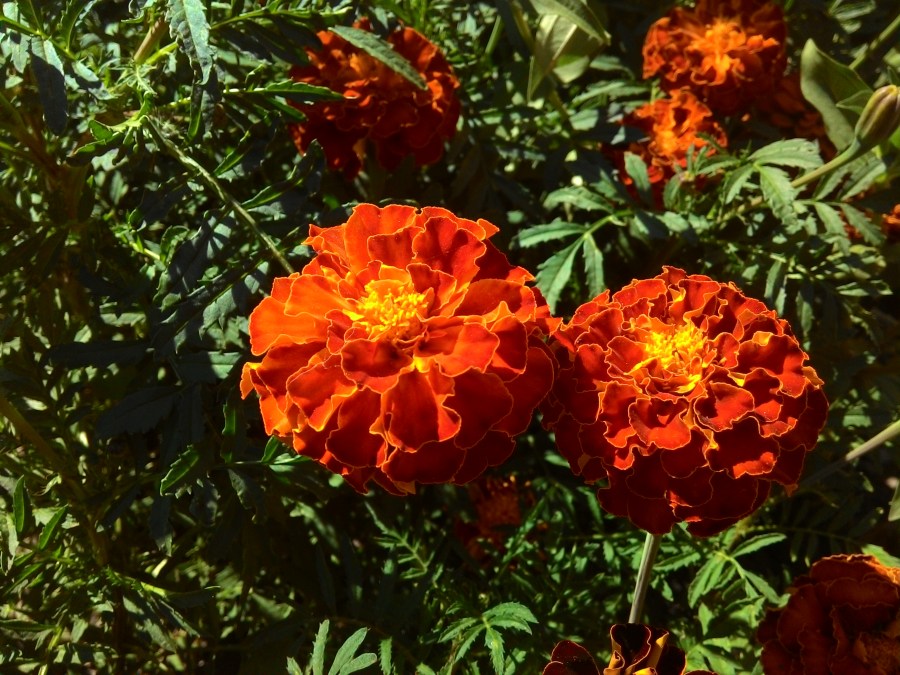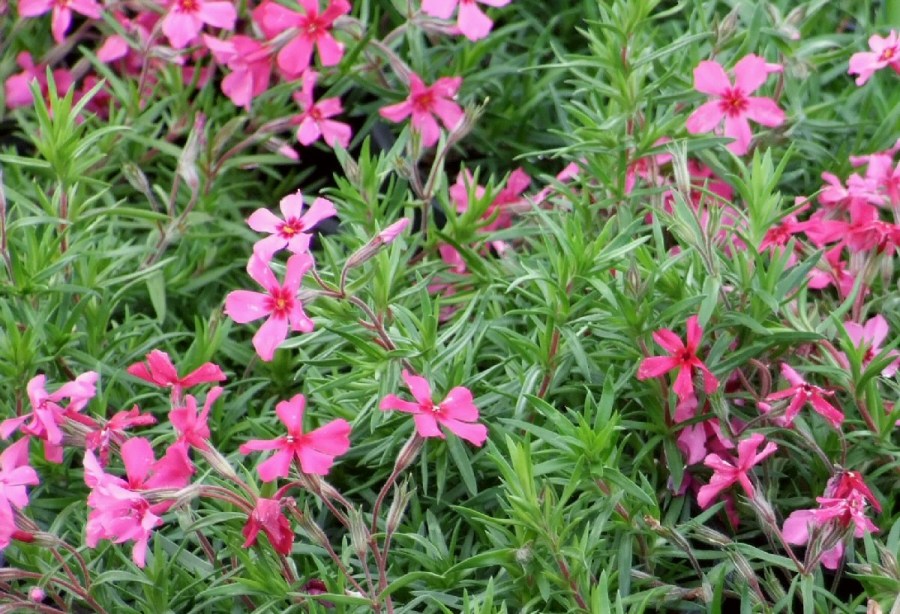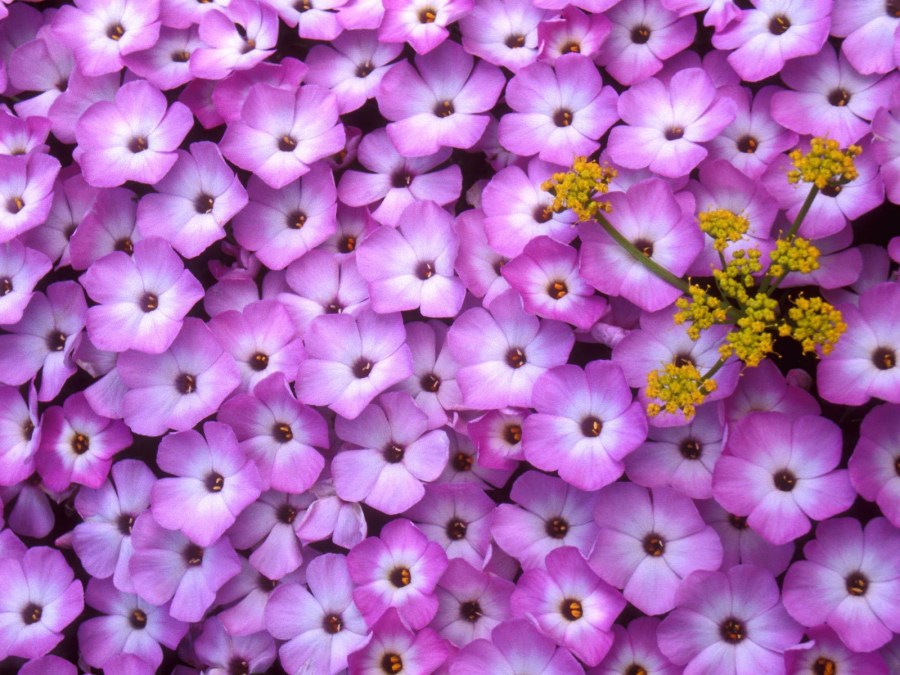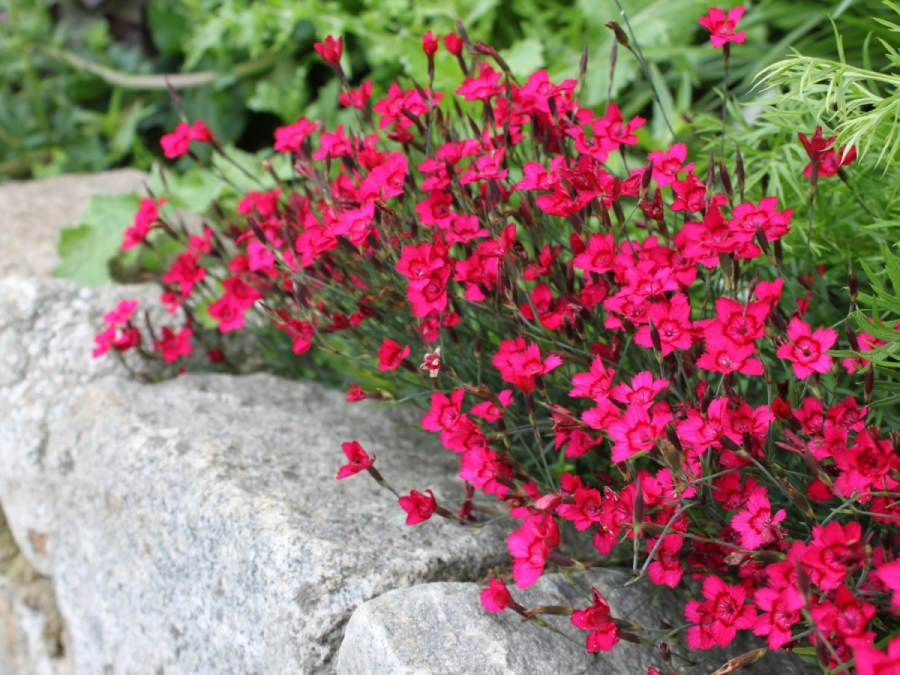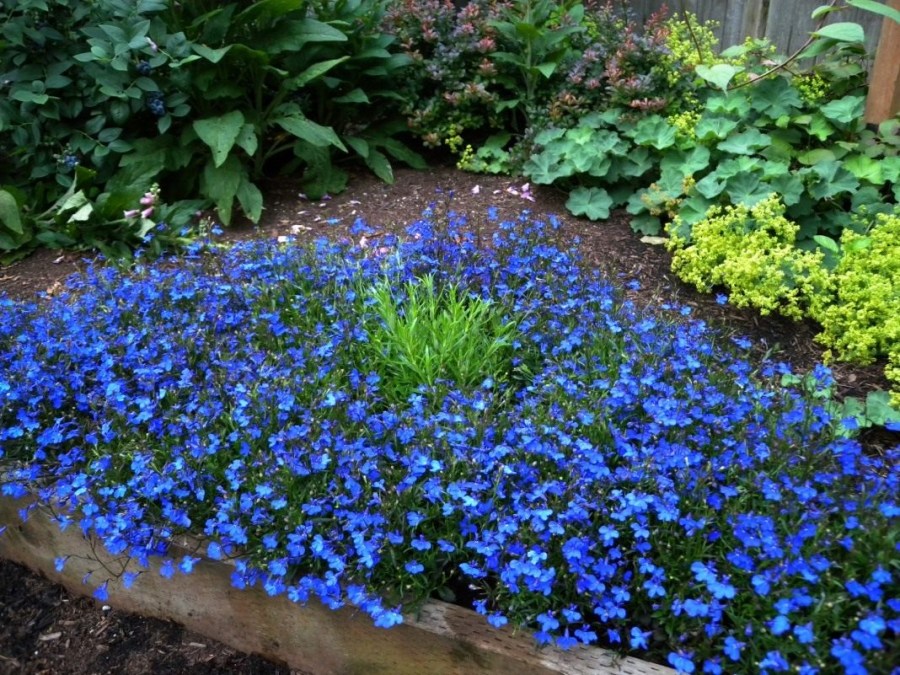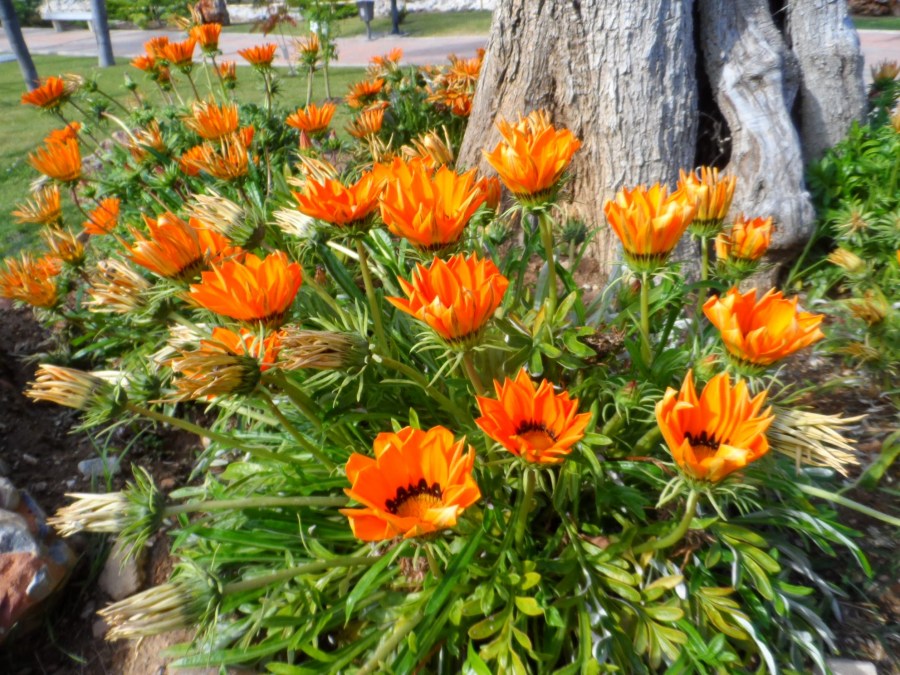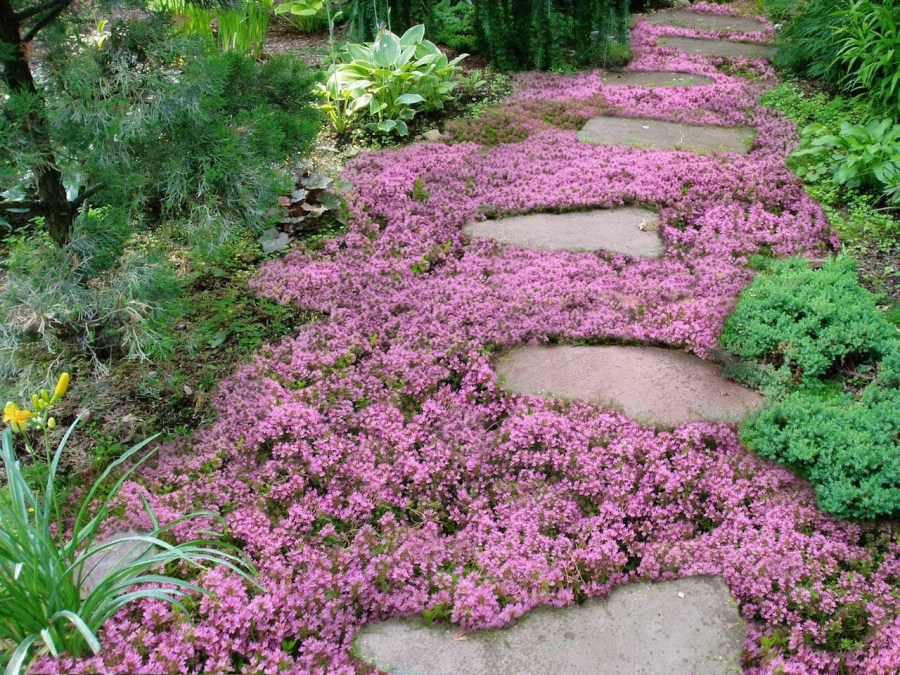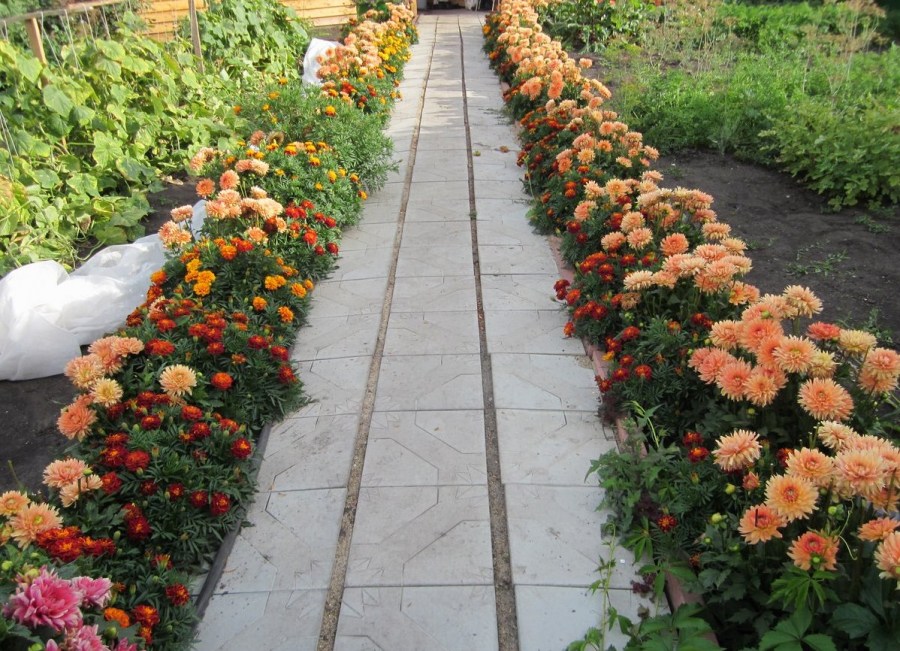Low flowers - beautiful ideas for use in landscape design (75 photos)
To create an original composition in the flowerbed will help undersized flowers. They can be the basis of the composition, the border-fence or the background for tall flowers.
There are undersized flowering flowers and non-flowering plants that have decorative shoots, leaves and unusual colors. A great option is a combination of these species.
Plant species
Perennial, annual, and biennial plants are distinguished.
Perennial plants
Perennial stunted flowers are planted once, and then for several years delight the eye with their beauty. It saves time, effort and money. In addition, weeds cannot break out from under dense tubers. However, perennials gradually lose their decorativeness, so updating is required (approximately once every 5-7 years).
Astrantia is large. Plant height does not exceed 70 cm. Can grow in any soil. Spreading bushes of astrantia are covered with white, pink or burgundy flowers. There are representatives with inflorescences of different shades on the same shoot.
It is necessary to remove wilted flowers in time, so that the plant has the strength to give new ones. Astrantia “loves” the sun; a place with a loose shadow is also suitable.
Sage oak. The second name of this undersized flower is salvia. The bushes are low and compact. Sage blooms throughout the summer.
Inflorescences are long purple candles, which looks very impressive. Shaded areas with moist soil are suitable for planting.
Alyssum maritime. Like most perennials, it refers to flowers that bloom all summer. Alissim inflorescences can withstand even the first frosts.
In regions with a warm year-round climate, it does not die out, and in a cold climate there is no need for shelter. The shades of flowers are diverse: white, yellow, pink, purple.
Dyusheneya Indian feels good in any soil, but requires constant soil moisture. The sun-loving plant is growing rapidly, covering the soil with a dense carpet. The flowers are small, yellow.
Of particular interest are the fruits of dyusheney, similar to strawberries. They are not edible, but perfectly perform a decorative function.
Crimson arena. Due to its unpretentiousness it is often used in the creation of alpine slides and rockeries. It can grow even on rocks and sand. It tolerates drought without difficulty, so frequent watering is not required.
The shoots of arenaria are painted in a crimson color, their height is no more than 15 cm. Flowers - asterisks are white or pale pink.
Balkan geranium. Bushes 25 cm high have carved bright green leaves. Foliage looks spectacular in the autumn period, when it becomes yellow or red.
Even in winter, the leaves do not fall, so geranium is used for year-round decoration of the garden. Flowering continues from June to September. Peduncles in red or purple have a pleasant aroma.
Juniper horizontal - a representative of non-flowering undersized plants. The dwarf grade Blue Chip is suitable for the garden. The color of spiny leaves is blue, dense needles. Juniper should be planted in well-lit areas, the soil can be any.
Annual plants
Low-growing annual flowers are distinguished by brightness and variety. Sow the seeds every year.But it is possible in the planting season to quickly create an updated design of the flowerbed.
Purslane has leaflets in the form of large needles that creep along the ground, creating a “carpet”. Therefore, gardeners often call this flower "rug." Flowers are simple and double, depending on the variety of plants.
Purslane can grow in sandy, rocky soil, drought tolerant. He needs the sun. The color scheme of inflorescences is huge: white, pink, yellow, red, orange, burgundy shades.
Petunia is a favorite of landscape designers due to the variety of varieties that differ in shape and color. The plant requires certain conditions for planting and care.
It is necessary to regularly loosen and fertilize the soil, and also water the petunia. In this case, overmoistening, which is detrimental to specimens with terry inflorescences, should be avoided.
Calceolaria is a beautiful and unusual flower native to South America. Original inflorescences - shoes can have yellow, orange, red or white color with dark touches. The diameter of the flowers is 6 cm, the height of the plant does not exceed 45 cm.
It is necessary to fertilize with universal fertilizers. It is also necessary to ensure that the aphid does not affect the calceolaria, as this disease is common for this type of plant.
Iberis (Iberian, wall) is a flower with simple leaves and small flowers. Inflorescences form umbrellas of a white (in bitter Iberis), pink or purple (in an umbrella species) shade. Peduncles have a pleasant smell.
After flowering, a pod is formed with seeds that can be used for planting. The sun-loving wall can be planted in stony soil or loam (soil with a high proportion of clay and sand). Does not require frequent watering, drought tolerant.
Biennial plants
Two-year-old flowers, as the name implies, will delight flowering for two years. They are frost-resistant, but for the winter they need to be sheltered. This group includes funny pansies, the beauties of Wittrock violets (known as “pansies”), delicate daisies, and touching forget-me-nots. These small plants with a height of no more than 20 cm are ideal flowers for flower beds.
When creating a mixborder composition, it is recommended to use combinations of the described species. In this case, the compatibility of plants, which is determined by:
- necessary soil composition
- growth rate
- watering frequency
- photophilic or preferred shade.
The specified parameters should match for plants located on the same flower bed.
Each photo of undersized flowers confirms the originality and beauty of these plants. In order for the flower bed to remain effective throughout the season, you must follow the rules of care:
- Remove faded flowers
- Make fences made of stones or plastic so that the roots do not grow excessively
- Take into account the growth rate of plants, do not plant flowers close to the border
- Create a drip irrigation system
- Use for winter shelter spruce branches or modern materials.
Photo of undersized flowers
Two-story house - successful projects for private residential houses and cottages (130 photos)
Low-growing flowers: 75 photos of beautiful design ideas and planting material
Well pump - 65 photos of the main types and a description of their features
Chainsaw: 75 photos and basic characteristics of universal tools
Join the discussion:
